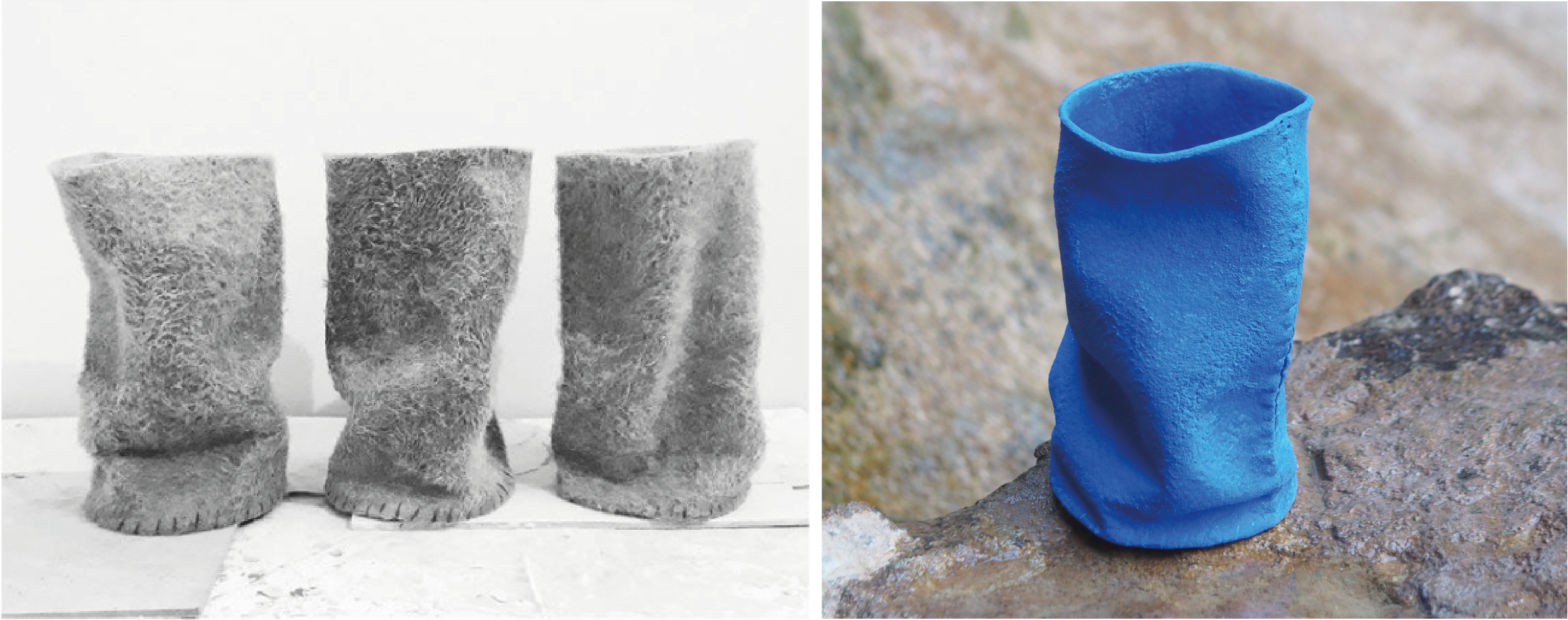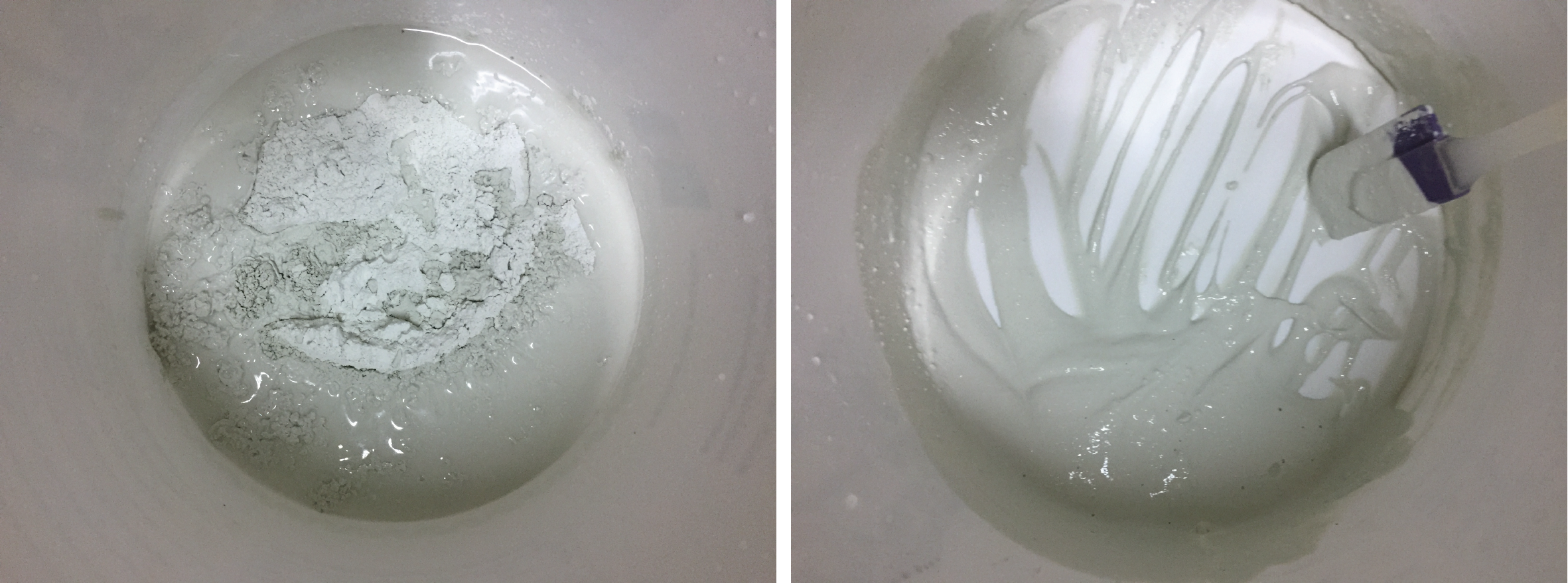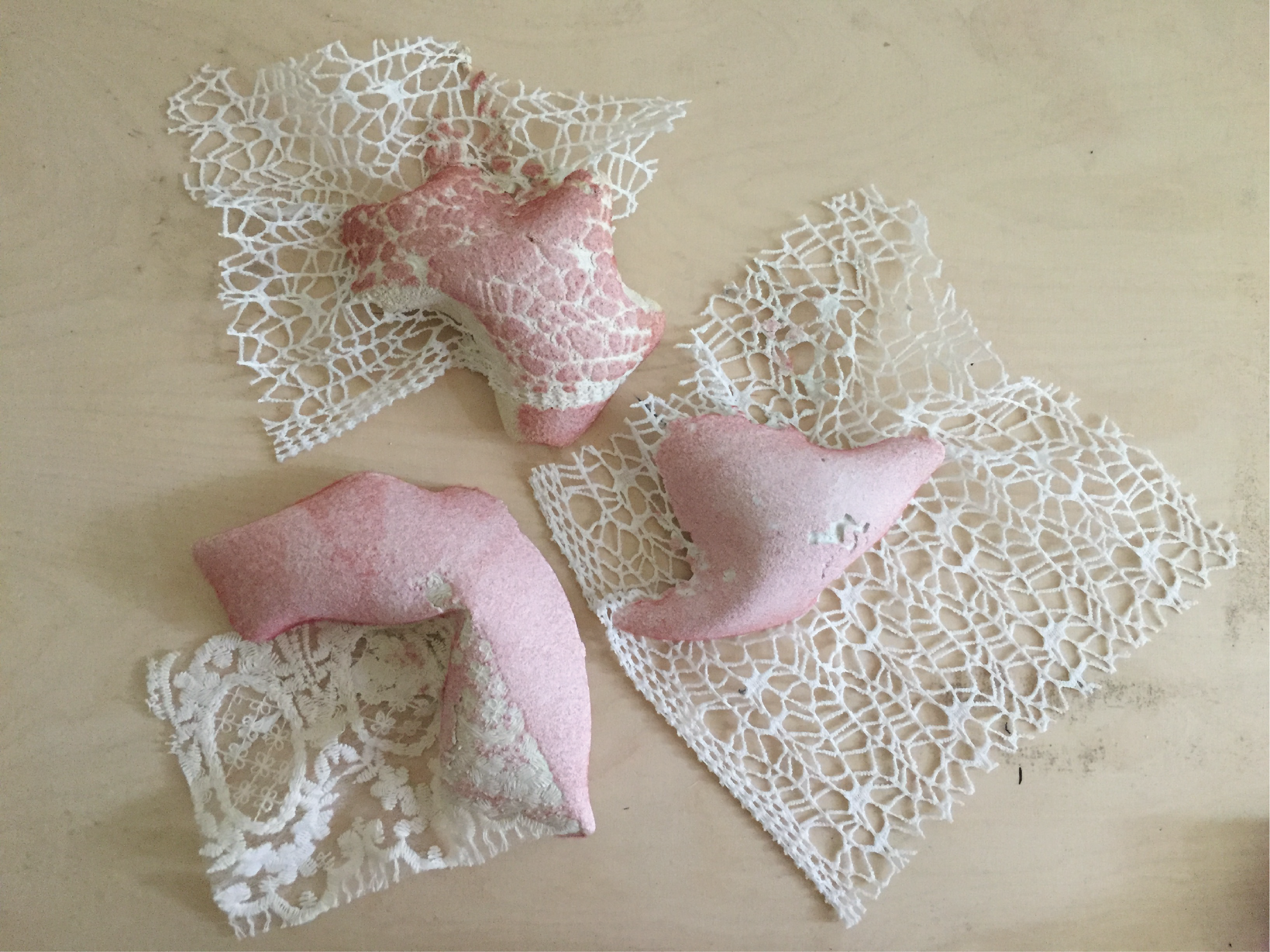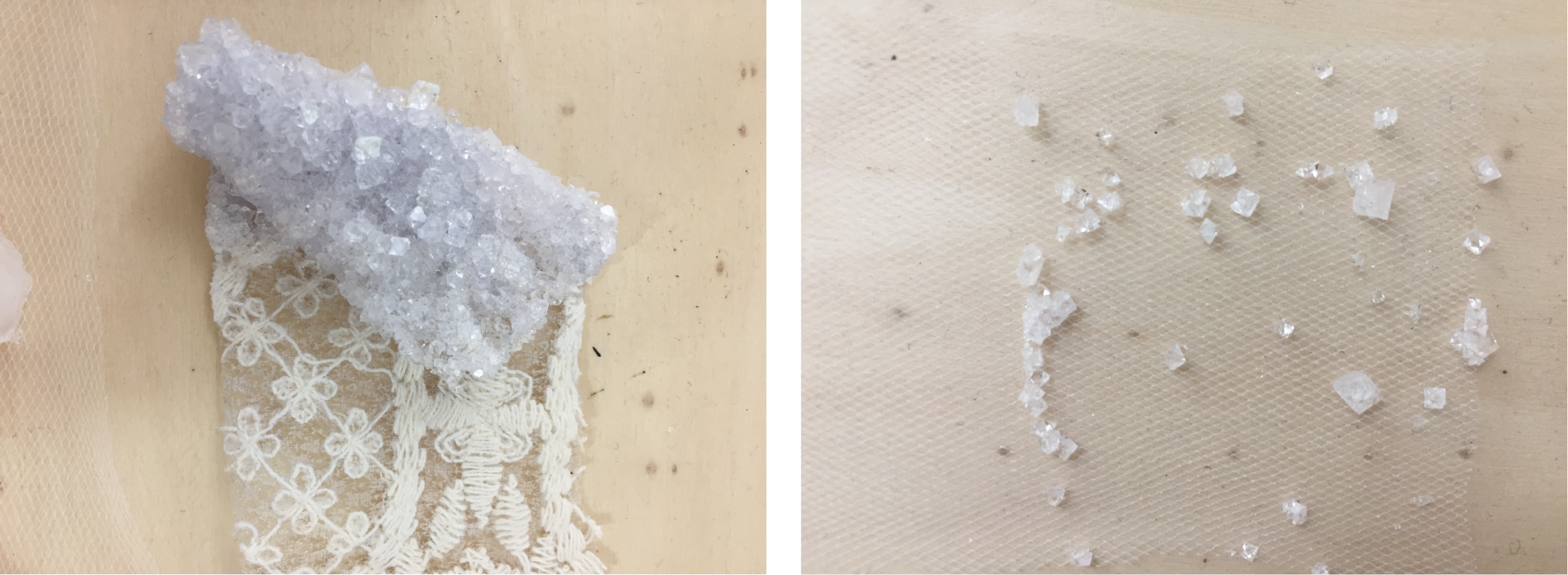9. Textile as scaffold¶
Growing crystals, making molds, casting, this week is full of experiement. Textile can be used in many ways during the fabrication process of an object. This is a short week for everything I wanted to do !
Inspiration¶
My friend Gaetan Bobichon makes beautiful vases in clay. He immerses the felt in the liquid clay, lets it dry and then he cooks it. The felt burns and only stays the clay.

Janwillem Van Maele made a stool in concrete with a textile mold. There is the fabrication process on this page.

There is this beautiful project of Paola Sakr using textile to mold ceramic.

Sundays - Paola Sakr from Kvadrat on Vimeo.
Casting¶
Previous work¶
This is my experience of casting liquid material.
There are vegetal elements poured in slip porcelain and cooked in the hoven. The vegetal elements burnt inside the porcelain.

There are shapes made with plaster cast in textile (big air chambers).

This is plaster cast in a piece of textile directly in the sand.

Making textile molds¶
I started to create molds with textile. First I drew on paper, then on a piece of textile that looks like felt, then I sew the pieces together.

I prepared the cement. It should have a smooth, almost liquid texture and it should be quickly poured because it dryes quite fast. Here are the proportion to make the slip of cement :
| slip cement | |
|---|---|
| cement | 1 cup |
| water | 1/2 cup |
I added blue pigment in the water.

I poured the cement with a syringe inside the textile molds. I hung them and let them dry a whole night. The next day, I unmolded by unstitching the textile pieces, it took me about 1 hour. There were very fragile and I broke them many times. In conclusion, the parts were too thin and it makes the objects too fragile.

The fibers of the fabric clung to the cement so it was quite hard to unmold them.

I poured cement in a rond frame with a texture plastic.

I also created a textile mold to cast 3 pieces of cement. Funny thing : instead of water, I added the red cabbage bath. It instantly became green when I poured it in the bucket. It means that it was in a basic environment.



Creating a mold with Rhino¶
I created a mold with Rhino, the aim was to use the CNC machine to build it. Unfortunately the machine was not working so well so I couldn't do it.
I took the pattern I created on week 7 with Grasshopper.

I used the function box, then booleanDifference, then chamfer.

The file is here.
Growing crystals¶
We grew alum crystals. We took the recipe from the course. We dissolved the alum in the hot water, mixed, filtered it and then poured it into different pots. We previously sticked alum crystals on the pieces of textile. We hanged the textile in the pots. It's very important that the textile doesn't touch the edges of the pot : it requires a good installation.
| alum crystals | |
|---|---|
| alum | 250g |
| water | 1L |



